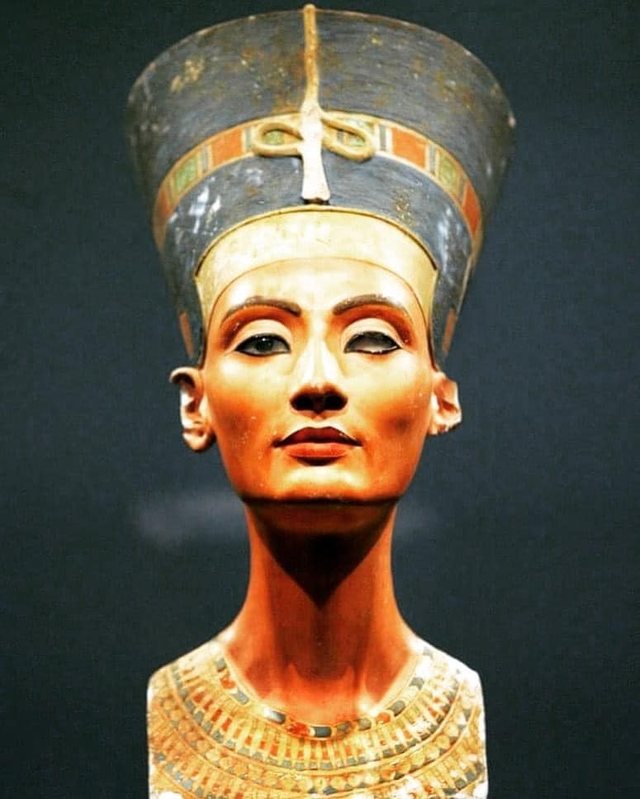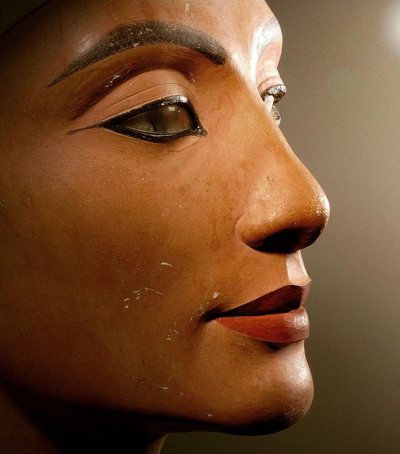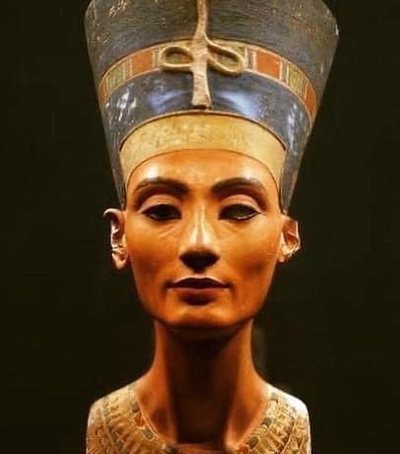
Nefertiti's head is so big, it looks like it's about to snap off her neck like a stalk.
She is like a papyrus flower swaying on its watery reed.
The head is swollen to the point of deformity, taking on a futuristic appearance, with the brain part enlarged, as if predicting the future fate of our species.
The crown is filled like a funnel, from which flows a hierarchical energy that floods the fragile vessel of the brain, pushing the face forward like the keel of a ship.
Nefertiti is like the Winged Victory of Samothrace, with her clothes clinging to her body by the winds of history.
The weight she carries on herself is the excess of her thoughts.
She is oppressed by the burden of the vigilant conscience of Apollo, the sun that never sets.
Egypt invented the pillar, which Greece would later imitate.
With her slender, aristocratic neck, Nefertiti is a pillar herself—a sculpture.
She carries the burden of the state, the beams of the temple of the sun, on her head.
The golden band on her forehead is a ritual bridle, constricting, limiting, and constricting.
Nefertiti looks towards the temenos of power, a sacred area from which she can never leave.**
By Camille Paglia





